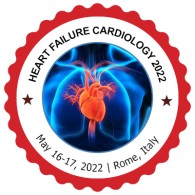
Dr. Mohammad Reza
Director
University of Arizona, USA
USA
Biography
Dr. Mohammad Reza Movahed received his MD from Medizinische Hochschule Hannover, Germany. He completed his medical residency at the University of Rochester, New York and his cardiology training at the University of South Caroline, Columbia. His final training in interventional cardiology was completed at Yale University Hospital, New Haven, Connecticut in 2000. After his training, he joined University of California Irvine as Assistant Clinical Professor and later joined University of Arizona College of Medicine in 2006 as Associate Professor of Medicine, Division of Cardiology. In July 2010, Dr. Movahed was promoted to Professor of Medicine, Tenure at the University of Arizona College of Medicine due to his excellent clinical work, teaching, service and research with over 200 peer reviewed publications. He has been Director of Cardiac Catheterization Laboratory and Nuclear Cardiology at the University of California, Irvine medical Center and Director of Coronary Care Unit and Medical Director of Cardiac Transplantation at the University of Arizona Medical Center. In 2007, he joined the Southern Arizona VA Health Care System for his clinical work and as the Medical Director of Heart Transplantation. In May 2012, he joined CareMore as The Regional Cardiology Director of CareMore in Arizona while keeping his teaching and research affiliation with the VA and the University of Arizona as Professor of Medicine, tenure.
Research Interest
His major area of research is related to coronary intervention, non-invasive cardiology and cardiovascular epidemiology. He is world-renowned for his coronary bifurcation classification known as “The Movahed Classification†He is also known for his discovery on the flattening of interventricular septum as a sign for right ventricular overload the so called “ Movahed’s sign†that can be seen during Gated SPECT studied and recently published reverse “Movahed Maneuver†that can be used for improvement of stent deliverability during difficult and tortuous vein graft interventions.

